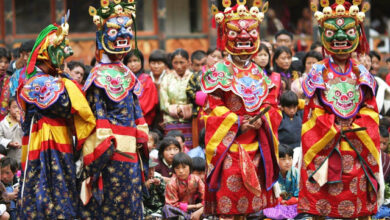Martyrs’ Day In São Tomé and Príncipe
Unveiling the Heroes: Martyrs' Day in São Tomé and Príncipe
Explore the remarkable history and significance of Martyrs’ Day in São Tomé and Príncipe, honoring the courageous heroes who shaped the nation’s destiny.
Related:
QUICK FACTS:
- Date: February 3
- Main Components: Memorial ceremonies, cultural events, speeches, medals
- Popularity: National holiday in São Tomé and Príncipe
- Pairings: Independence Day, Agricultural Reform Day, Armed Forces Day
- Variations: None
Introduction
São Tomé and Príncipe is a small island nation in Central Africa, with a population of about 200,000 people. It was a Portuguese colony for over 500 years, until it gained its independence in 1975. However, the road to freedom was not easy or peaceful. It was marked by oppression, exploitation, and violence. One of the most tragic and significant events in the history of São Tomé and Príncipe was the Batepá Massacre, which took place on February 3, 1953. On that day, hundreds of native creoles (people of mixed African and European descent) were massacred by the colonial administration and Portuguese landowners, who accused them of plotting a communist uprising. The massacre sparked a wave of resistance and nationalism that eventually led to the formation of the Movement for the Liberation of São Tomé and Príncipe (MLSTP), headed by Amílcar Cabral, one of the most prominent African leaders of the 20th century. The commemoration of the Batepá Massacre is not only a tribute to the martyrs who sacrificed their lives for freedom, but also a reminder of the need to preserve and promote the cultural diversity and social justice of São Tomé and Príncipe.
Related: Heroes’ Day In Mozambique
The Causes and Consequences of the Batepá Massacre
The Batepá Massacre was the culmination point of a long-standing conflict between the different groups of people living in São Tomé and Príncipe. The islands were discovered and settled by the Portuguese in the 15th century, but they were uninhabited at the time. To work on the sugar plantations, the Portuguese brought African slaves from mainland countries such as Angola, Mozambique, and Cape Verde. These slaves eventually became free or escaped, and formed a new group of native creoles, known as forros. They were joined by degredados (undesirables deported from Portugal), such as criminals, political dissidents, or Jews. The forros and degredados intermarried with each other and with the indigenes (native Toméans and Príncipeans), creating a diverse and complex society.
However, this society was not equal or harmonious. The Portuguese colonial government favored the white settlers and suppressed the rights and aspirations of the local population. The forros were discriminated against and marginalized by the colonists, who considered them lazy, ignorant, and rebellious. The forros resented the colonists for exploiting their land and resources, and for imposing their culture and religion on them. The forros also had conflicts with the contracted workers from mainland Africa, who were brought to work on the cocoa and coffee plantations in the 19th and 20th centuries. These workers were treated as slaves by the colonists, who subjected them to harsh working conditions, low wages, and physical abuse. The workers often rebelled against their oppressors, but they also clashed with the forros, who saw them as invaders and competitors.
The tension between these groups reached a boiling point in 1953, when a rumor spread that some Cape Verdian workers had planned to kill all the forros on February 3, which was a holiday for them. The rumor was probably fabricated by some Portuguese colonists or officials, who wanted to create a pretext for cracking down on the forros and eliminating their leaders. The forros, who were armed with machetes and guns, attacked and killed many Cape Verdians in several villages, especially in Batepá, where the massacre got its name. The Portuguese authorities responded with brutal force, killing hundreds of forros, creoles, indigenes, and other civilians who were suspected of being involved or sympathetic to the uprising. The official death toll was 230, but some estimates suggest that more than 1,000 people died in the bloodbath.
The massacre had a profound impact on the political and social situation in São Tomé and Príncipe and beyond. It exposed the cruelty and injustice of the Portuguese colonial rule and inspired many people to join or support the resistance movement against it. It also sparked international condemnation and pressure on Portugal to end its dictatorship and grant independence to its African territories. It also created a rift between São Toméans and Cape Verdians, who had previously coexisted peacefully and shared a common creole culture.
Related: National Freedom Day In United States
The Commemoration of the Batepá Massacre
The Batepá Massacre is officially recognized as a national holiday in São Tomé and Príncipe, called Martyr’s Day or Dia de Mártires da Liberdade. The commemoration involves various activities, such as laying wreaths at memorials, holding ceremonies at mass graves, organizing cultural events, delivering speeches, and awarding medals to survivors or relatives of victims. The commemoration also extends to other countries where there are communities of São Toméans or Cape Verdians, such as Portugal, Angola, Brazil, France, etc.
The commemoration of the Batepá Massacre is important and relevant for today’s society for several reasons. First, it is a way of honoring and remembering the martyrs who fought for freedom and dignity against colonial oppression. Their courage and sacrifice are an inspiration and a lesson for future generations. Second, it is a way of celebrating and affirming the identity and diversity of São Toméans and Príncipeans, who have a rich and varied cultural heritage that includes African, European, Asian, and American influences. Their history and culture are a source of pride and strength for their nation. Third, it is a way of raising awareness and promoting dialogue about issues such as racism, discrimination, human rights, democracy, development, peace, etc. These issues are still relevant and challenging for many countries and people around the world.
Conclusion
The Batepá Massacre was a tragic and significant event in the history of São Tomé and Príncipe. It was a turning point in the struggle for independence from Portugal and a catalyst for the formation of the MLSTP. The commemoration of the Batepá Massacre is not only a tribute to the martyrs who sacrificed their lives for freedom but also a reminder of the need to preserve and promote the cultural diversity and social justice of São Tomé and Príncipe. The commemoration also invites us to reflect on the causes and consequences of violence and oppression and to seek ways to prevent them from happening again. The commemoration also encourages us to appreciate and respect the differences and similarities among people and nations, and to foster cooperation and solidarity among them. Martyrs’ Day in São Tomé and Príncipe is a day of memory, celebration, and hope.



